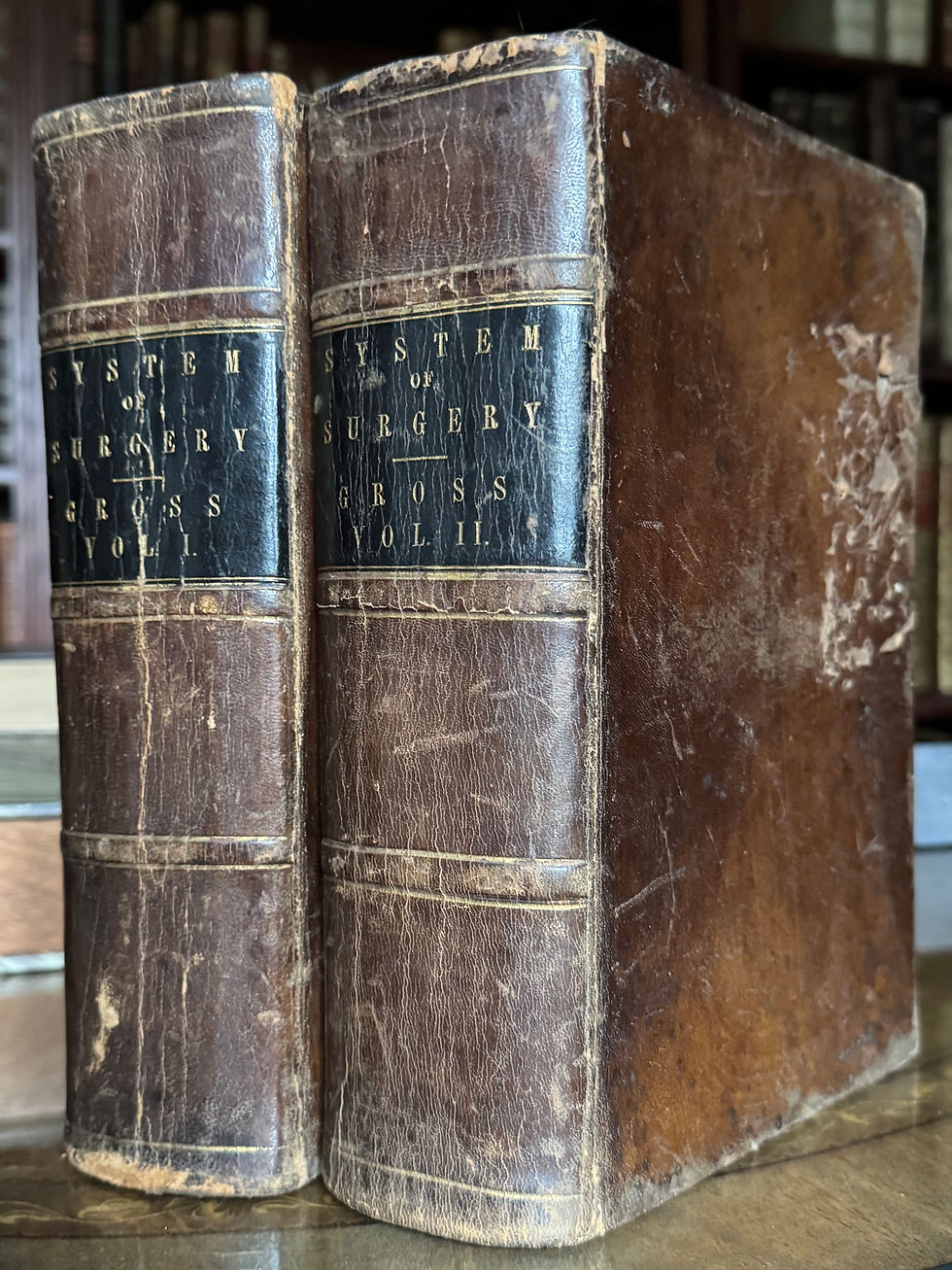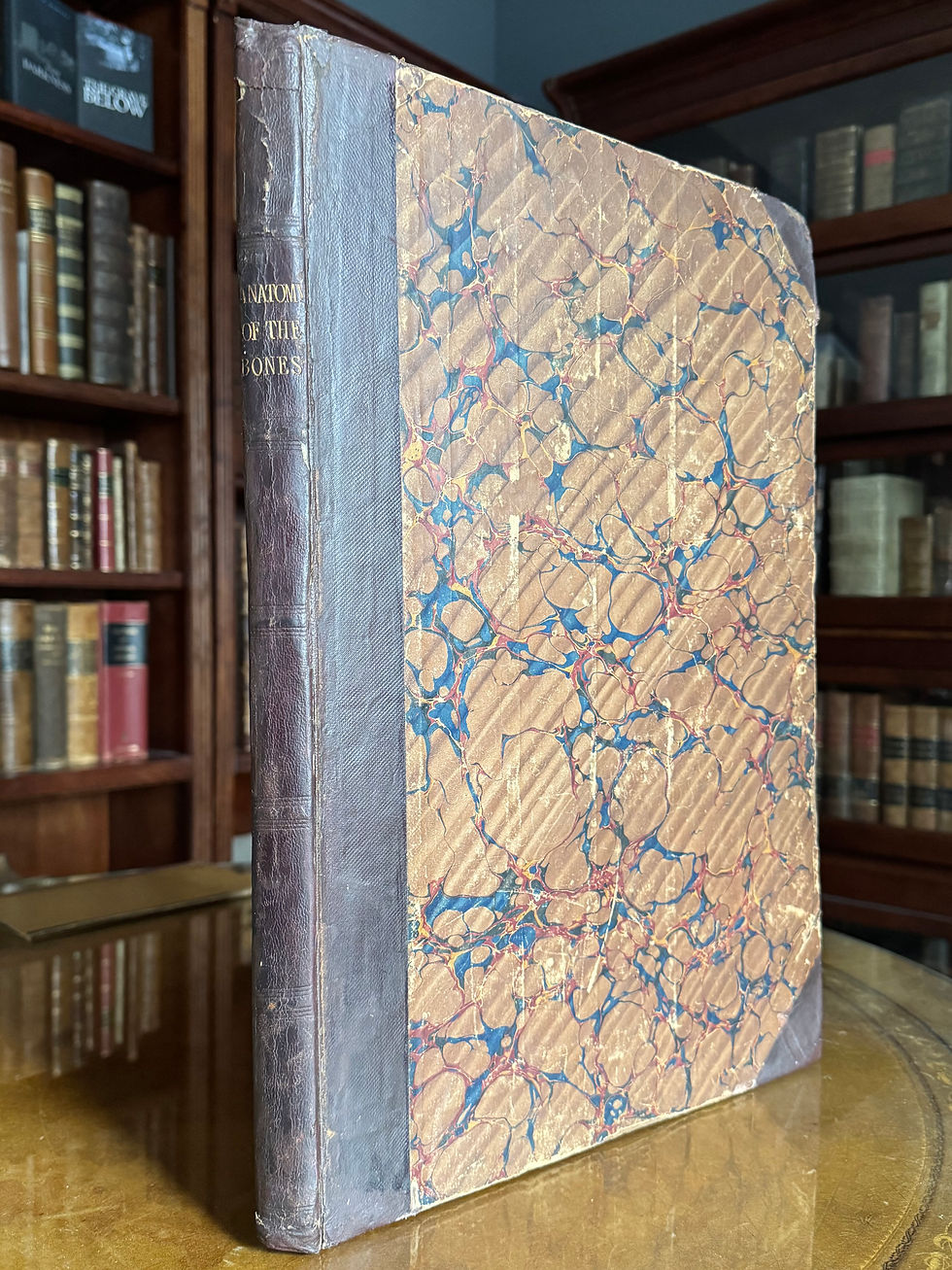Soemmerring, Icones Organorum Humanorum Olfactus, 1810
Samuelis Thomae Soemmerring Icones Organorum Humanorum Olfactus. Francofurti Ad Moenum, Apud Varrentrapp et Wenner, 1810.
Samuel Thomas Von Soemmerring (1755 – 1830), the son of a physician, studied at Gottingen (under Wrisberg), England, Scotland, and the Netherlands. He was a friend of William Hunter as well as Pieter Camper. He was professor of anatomy at the Collegium Carolinum in Cassel, and later professor of medicine at Mainz. He was an admirer of Albinus and strove for anatomical illustrations with perfect accuracy. He was a skilled artist and trained Christian Kock to draw his plates. He published on the skeleton, embryology, the eye, cranial nerves, and even corsets. He also translated Matthew Baillie’s Morbid Anatomy into German in 1794. (Thornton 1966). He was also one of the inventors of the electric telegraph (Bibliotheca Osleriana 4001).
Folio in blue paper over boards with later brown cloth spine. Red ties at fore-edges. Boards and spine worn, stained, and chipped. Corners bumped. Book plate (James Tait Goodrich) on front paste down. Binding starting to fail with first bifolium detached. Deckled edges. Mild to moderate foxing. Margins quite large.
Title, iii – viii, 1 – 23 plates and explanations.
Total of 9 plates.
Text in Latin.
Measures: 16 ¾ x 11 3/8 x ½ inches.
Bibliotheca Walleriana 9049.
First published in 1809 as Abbildungen der menschlichen Organe des Geruches, and is “among his principles works” (Heirs of Hippocrates 704).
“As far as pictorial representation is concerned, Soemmerring can be compared to no other anatomist so fittingly as with Albinus, whom he himself esteemed very highly. He aimed, like Albinus, at the discovery of the true and beautiful in the form of every part of the human body and combined a perfect sense for artistic representation with the most exact perception of details. He endeavored, like Albinus, to have every part reproduced just as it existed in the living body, and not as it appeared after death from the treatment of the anatomist. This is one of the reasons that Soemmerring’s pictures have, for a long time, maintained such a strong influence both in anatomy and anatomic illustrations. They replaced all the repulsive, unaesthetic, and unnatural features so often prominent in earlier anatomic representations by the substitution of incomparably better ones.” (Choulant, pg 301)
Not in Garrison-Morton, but see also G-M 1383 for his publication on the cranial nerves in general.
















